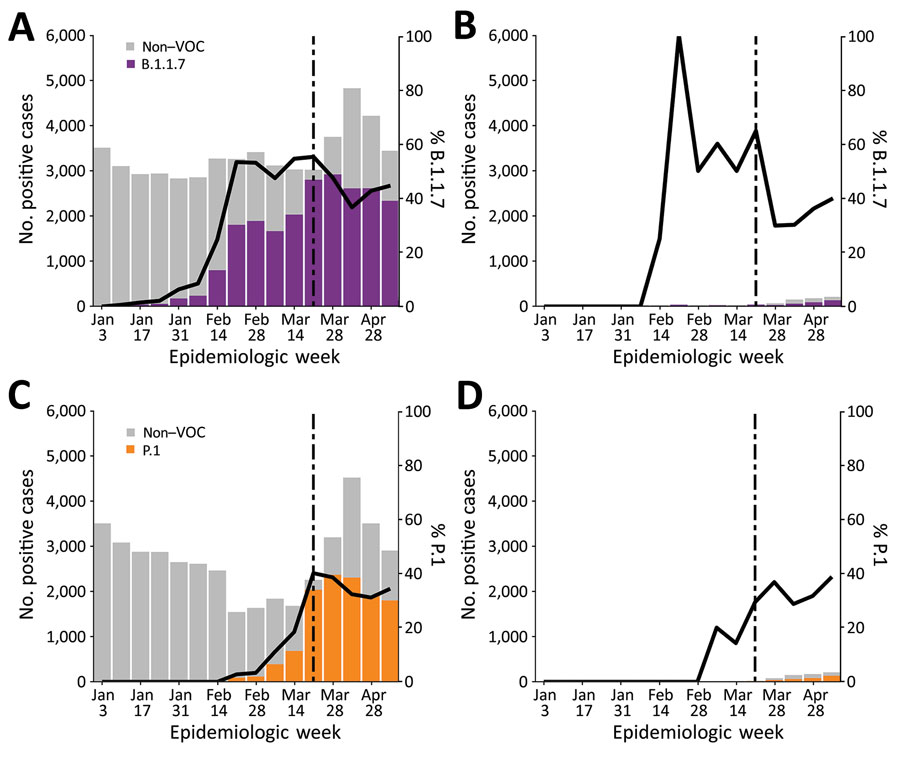Volume 27, Number 11—November 2021
Research
Rapid Increase in SARS-CoV-2 P.1 Lineage Leading to Codominance with B.1.1.7 Lineage, British Columbia, Canada, January–April 2021
Figure 2

Figure 2. Distribution of all severe acute respiratory syndrome coronavirus 2 cases and VOC cases by vaccination status, British Columbia, Canada, January–April 2021. Vaccinated persons included those who had received 1 dose of a 2-dose vaccine with diagnosis confirmed by PCR >21 days after the first dose (on the basis of specimen collection date). Stacked bars (left-hand y-axis) represent the absolute number of VOC cases and non-VOC cases. Solid lines (right-hand y-axis) show the percentage of VOC among all cases identified in a given week. Dotted lines show the date when VOC quantitative PCR (qPCR) including E484K mutation detection was adopted at the British Columbia Centre for Disease Control Public Health Laboratory. A) B.1.1.7 and non-VOC cases in nonvaccinated persons. B) B.1.1.7 and non-VOC cases in vaccinated persons. VOC cases in panels A and B included B.1.1.7 confirmed for lineage by whole-genome sequencing and presumptive B.1.1.7 positives based on a VOC qPCR result of N501Y-positive and E484K-negative. C) P.1 and non-VOC cases in nonvaccinated persons. D) P.1 and non-VOC cases in vaccinated persons. VOC cases in panels C and D included P.1 and B.1.351 confirmed for lineage by whole-genome sequencing and presumptive P.1 positives based on a VOC qPCR result of N501Y-positive and E484K-positive or K417T-positive. VOC, variant of concern.
1These authors contributed equally to this article.